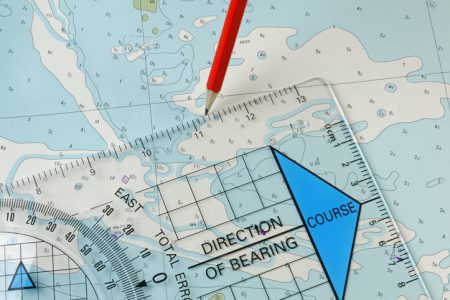Enhancements to En Route IFR Charts for Foreign Aviation Airspace
Before the introduction of electronic flight bags and apps into the cockpit, pilots faced the challenge of determining their aviation airspace without the assistance of technology. They had to rely on their surroundings, such as landmarks and navigational aids, to determine their location.
Fortunately, with the advent of modern technologies, pilots now have access to real-time information about their airspace. The pleasant voice announcing entry into Class C airspace provides a sense of reassurance and confirms situational awareness. While it is still necessary for pilots to maintain a vigilant mindset and have backup navigation methods on hand, the convenience and comfort of technology greatly enhance their overall flying experience.
Introducing an Exciting Enhancement to En-Route Charts
In this age of readily available direct-to-GPS navigation, it’s easy to overlook traditional en-route IFR charts. However, a new enhancement is being added to these charts that is worth noting.
Beginning June 15, all en-route U.S., Alaska, and Pacific High/Low IFR aeronautical charts will include limited foreign data. The objective of this update is to enhance situational awareness regarding transition points between U.S. airspace and other countries.
The reason for this change is simple. The FAA doesn’t receive foreign information far in advance, making it difficult to incorporate it into the foreign areas of the charts. Therefore, these enhanced transition points will serve as a reminder for pilots to consult the current charts and publications of the specific countries they are entering.
Why is Navigation Important?
Up-to-date navigation information is important. Here are ten reasons why pilots need to check aeronautical information regularly:
- Safety: Updated navigation information helps pilots navigate accurately, avoid obstacles, and maintain a safe flight path.
- Efficient Routing: Current navigation data allows pilots to select the most efficient routes, reducing fuel consumption and saving time.
- ATC Compliance: Pilots need accurate navigation information to follow ATC instructions and maintain proper separation from other aircraft.
- Weather Avoidance: Up-to-date navigation data enables pilots to navigate around hazardous weather conditions, ensuring a safe and comfortable flight for passengers.
- Terrain Awareness: Accurate navigation information helps pilots identify and avoid terrain features and obstacles, especially during approach and departure phases.
- Reduced Environmental Impact: Updated navigation data helps pilots optimize flight paths, minimizing noise pollution and reducing emissions.
- Precision Approaches: Pilots rely on current navigation data to execute precision approaches, such as instrument landing system (ILS) or satellite-based approaches, ensuring a smooth and precise landing.
- Enhanced Passenger Comfort: With accurate navigation information, pilots can anticipate turbulence and make adjustments to provide a smoother ride for passengers.
- Regulatory Compliance: Aviation authorities require pilots to have access to the most recent navigation databases to ensure compliance with regulations and standards.
- Emergency Situations: In the event of a diversion or emergency, up-to-date navigation information is crucial for pilots to identify alternate airports, navigational aids, and emergency procedures.
It’s important to note that U.S. charts are exclusively for domestic navigation within the United States. When traveling to another country, make sure to use charts specifically designed for that nation.
Modern technologies provide pilots with access to real-time information about their airspace. With this convenience, however, comes the responsibility to remain vigilant and research all available sources for navigation information. By having these additional transition points marked on FAA charts, pilots will be better prepared when transitioning between U.S. airspace and other countries. To ensure a safe flight experience every time, pilots should review all navigation information regularly and understand the protocols of flying over different countries’ airspace. Taking the time to do this will enhance their situational awareness when it comes to planning and completing a successful flight plan.










